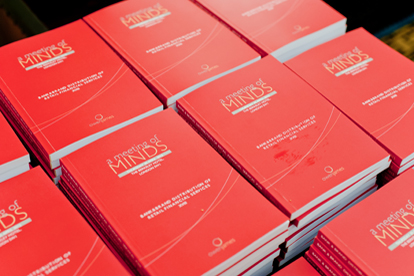
Expert: Caroline Burkart - Scorpio Partnership
Moderator: Hubert Brown - Scorpio Partnership
Key message
How can wealth management firms provide a value proposition that will stand the test of time? The concept of customer experience and its importance as a value proposition for high net wealth clients was high on the agenda.
Delegates welcomed the premise that a positive and engaging customer experience can prove to be a powerful tool in promoting client retention and client referral rates, especially during periods of falling returns on investment.
Furthermore, in order to properly assess the fundamental needs and wants of clients, better and more imaginative utilisation of surveys was needed.
Headlines
- Issues previously considered as having little or no bearing on the client journey, such as culture and country-specific norms, are now increasingly significant.
- Utilising surveys is an important method to gauge client satisfaction. Surveying clients at deliberately predetermined times produces a more representative picture of how clients feel about their experience with their wealth manager
- There is a greater need to understand the underlying principles of KPI satisfaction measures such as the Net Promoter Score (NPS). This developed further to encompass a discussion on the opportunities and benefits of an industry wide benchmark.
Key themes
The growing complexities of the client journey
Participants began by discussing the merits of Disneyland as an organisation that prides itself on a first rate service to its customers. Some delegates were quick to point out that the client experience within the organisation differs significantly between Europe and the United States. This is reflected in some of the geographical nuances in wealth management sentiment.
“Disneyland in Europe is not the same as Disneyland in the US.”
The disparity in customer satisfaction is attributed to a number of reasons not often identified as typically having a causal influence on an enjoyable client service. Factors such as culture and country-specific attitudes to customer service were cited as being important in attributing the difference between Disneyland’s two operations.
“I’ve often believed that the French look at Disneyland as a plastic toy store a couple of miles from Versailles”
Cultural norms can have a significant bearing on how businesses and their employees go about providing products and services to their customers. In Disneyland USA, the client experience is deemed to be exceptional due to the quality and attention employees provide to customers. This was identified as being a consequence of the quality of training provided to staff members, with participants mentioning that in the US, a culture of exceptional client service is fostered into newly recruited employees.
In the wealth management industry, delegates felt that customer satisfaction is an area of engagement the industry can improve remarkably on to produce a better overall service for clients. There are rudimentary and outdated methods in which delegates sometimes interact with their customers. For example, one delegate raised the inadequacies in which private banks send out Terms and Conditions (T&Cs) notifications to their clients as an outdated and mundane method of communication. The industry should look further afield to other financial services (such as insurance) to better understand how to summarise relevant documents to clients.
How can we capture and understand client satisfaction better?
Many advisors were keen to understand how to quantify and gauge the level of satisfaction among their clientele. Methods of surveying customers online and on the telephone were mentioned as typical techniques. In addition to this, more can be done to achieve a more representative picture of client satisfaction. Rather than surveying clients immediately after on-boarding, it can be more insightful to question their experiences once they have experience the proposition for longer. This negates the possibility of overestimating any residual benefits from the ‘honeymoon’ period.
KPI satisfaction scores and the possibility of moving towards an industry-wide benchmark
A key metric of performance typically used to measure client satisfaction is the Net Promoter Score (NPS). The score measures the likelihood of a client making a referral to their wealth manager. Delegates and indeed the industry need to understand more about how NPS is calculated and how it can be used.
Achieving a strong NPS score was discussed as a positive step towards growing the client base independent of investment return related factors. During periods of low returns strong client satisfaction across the private bank’s products and services could act as a buffer against investment performance. There does however need to be some caution as the indicator can be volatile and needs to be read alongside additional factors and KPIs.
From an industry perspective, delegates were keen to understand the merits of an industry wide benchmark. Having a comparative assessment of client satisfaction for the wealth management industry could provide the necessary impetus to further improve client engagement. UBS’s ‘TripAdvisor’, for example, is the first step in benchmarking firms from a feedback perspective although there were concerns that this could both be manipulated, and that it lacked independence.
Conclusions
In conclusion, delegates were open and frank about what they believed represented a lasting and comprehensive experience for their clients. Many noted the obtuse and outdated methods in which their private banks interact with their client base on a daily basis, while others voiced certain constraints in such a highly regulated market.
The overwhelming majority of attendees agreed that client experience is an important driver for future growth opportunities for their organisations. Such common thinking could very well incentivise market participants to form a common standing on the benefits of an industry wide benchmark of client satisfaction.


